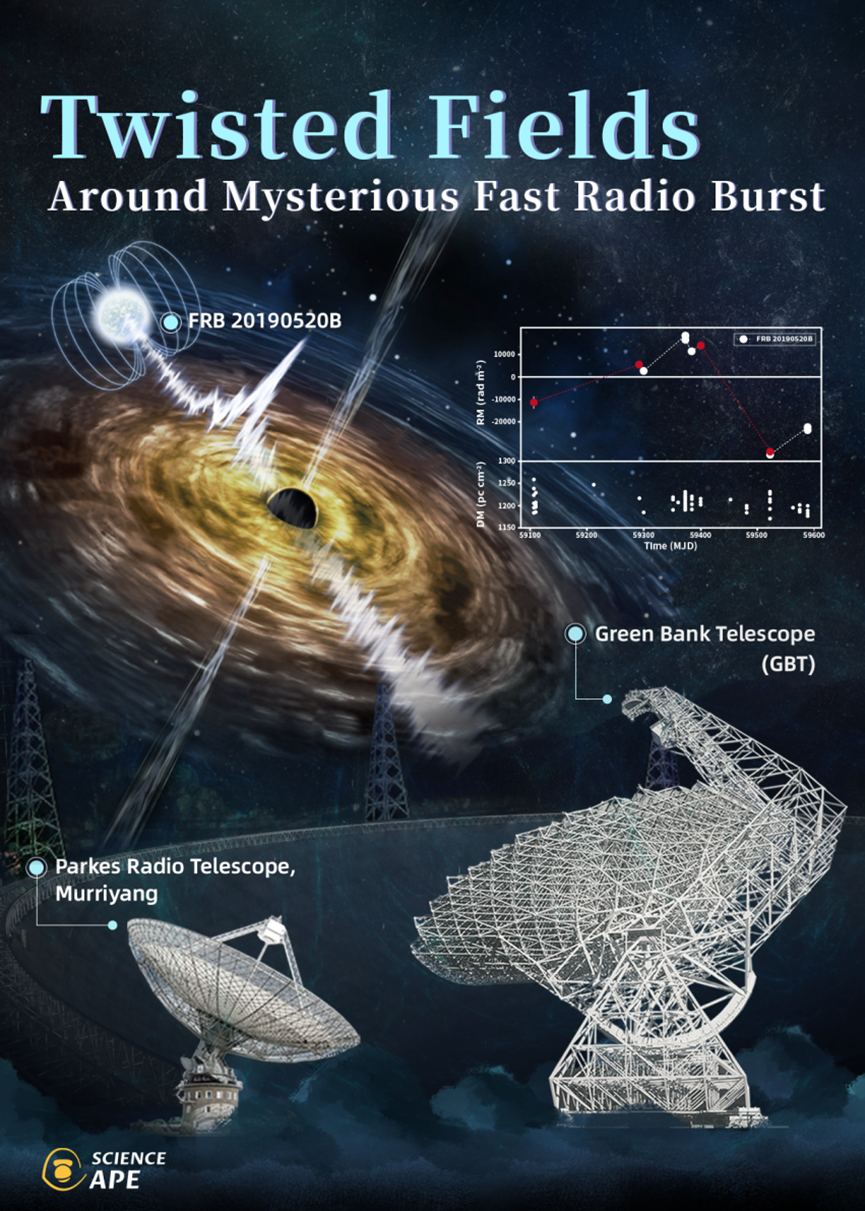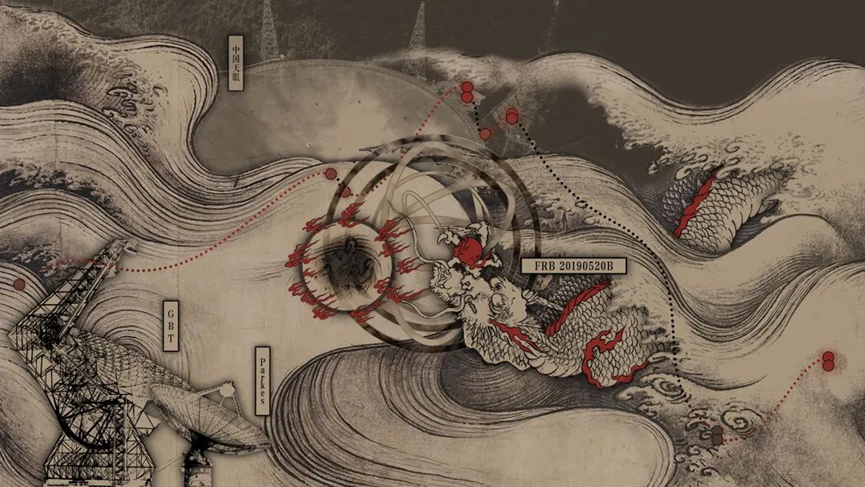

On May 12, 2023, a major discovery in the field of fast radio bursts, the Magnetic Field Reversal in the Turbulent Environment Around a Repeating Fast Radio Burst, was published in Science, a top international academic journal, FENG Yi, a Research Expert at Zhejiang Lab, as one of the co-first authors, and LI Di, the Chief Scientist of computing astronomy at Zhejiang Lab, as one of the co-corresponding authors.

Photo provided by ScienceApe
Fast radio bursts (FRBs) are the most violent bursts in the radio band in the universe, and the observations of fast radio bursts provide a new window for humans to explore the mysteries of the universe. Fast radio bursts occurred from a single burst to multiple bursts and then to repeating bursts. A large number of radio telescopes have been set up around the world in recent years and have rapidly updated human observations and knowledge of fast radio bursts.
This important discovery, published in Science, involves observations with large international facilities spanning three continents.
The subject of the paper, FRB 20190520B, was discovered by the Commensal Radio Astronomy FAST Survey (CRAFTS) project team with the Chinese FAST, and is the world's first continuously-active repeating fast radio burst. Since its appearance on May 20, 2019, one or more telescopes have detected the burst reliably and continuously each time.
Using the Parkes Radio Telescope in Australia and the Green Bank Telescope in the United States, the research team led by LI Di has been monitoring FRB 20190520B for 17 months. "ZJ Lab's intelligent computing astronomy platform has provided important help for astronomy research," said LI Di. "We use AI algorithms combined with the ZJ Lab's Fast Radio Burst Database System to analyze the fast radio burst signals. In the future, our computing astronomy platform will continue to promote international cooperation programs in related fields."
Based on long-term monitoring data, the team measured the polarization properties of FRB 20190520B and found that there is a huge variation in its Faraday rotation measure.
The Faraday rotation measure, which is quite unfamiliar to most people, hides many features of the cosmic magnetic environment and is crucial for radio astronomy research. "Electromagnetic waves passing through a magnetized plasma undergo a change in vibrational direction, which is known as Faraday rotation measure," explained FENG Yi. "A fast radio burst passes through the plasma in the universe before reaching Earth, undergoes Faraday rotation by the magnetic field, and the burst changes its vibration direction accordingly, arriving at Earth in a different direction from that when it is first emitted. Therefore, the Faraday rotation measure can be analyzed to infer the cosmic magnetic environment through which the fast radio burst passes."
FENG Yi further pointed out that the Faraday rotation measure reflects the electron density and magnetic field strength. The greater the electron density and magnetic field strength, the greater the angle of vibration rotation, corresponding to the greater the Faraday rotation measure, while the sign of the Faraday rotation reflects the pointing of the line-of-sight magnetic field.
The research team, supported by the intelligent computing data reactor, used the algorithms of ZJ Lab's intelligent computing astronomy platform to process the data efficiently, and found through comprehensive analysis that the Faraday rotation measure of FRB 20190520B had undergone two sharp shifts of positive and negative values. This indicates that there is an extreme inversion of the magnetic field around it, that is, FRB 20190520B may be in a binary system, and the companion star of the binary stars may be a black hole or a massive star.
This discovery is an important step forward in the study of the origin of fast radio bursts. The discovery of the first continuously-active fast radio burst FRB 20190520B with the Chinese FAST has already spawned a series of important discoveries and models, and the publication is an important advancement in the field of computing astronomy research. In the future, the continued monitoring of FRB 20190520B is expected to further reveal the origin and environment of fast radio bursts.

The artistic imagination picture of this result: Partial of the Nine Dragons by CHEN Rong, a painter of the Southern Song Dynasty, was selected for re-creation. The background symbolizes the cosmic space with raging waves, and the RM measurement point graph emerges from the waves; the main body symbolizes the black hole with a ring-shaped flame, and dances with a dragon and stars on the muddy sky orbit, echoing the observation result of the magnetic field reversal around the binary stars. Photo provided by FENG Yi.











